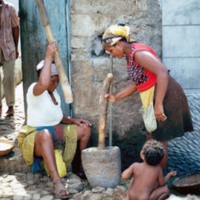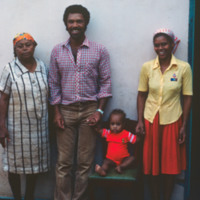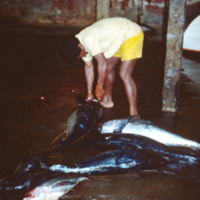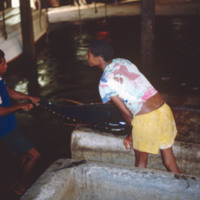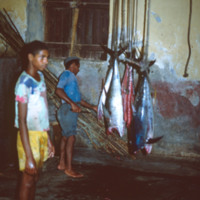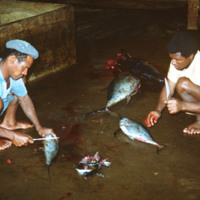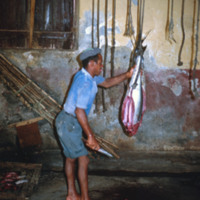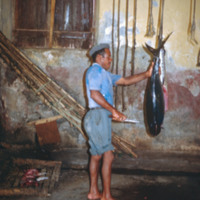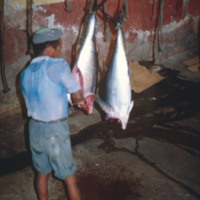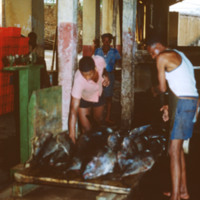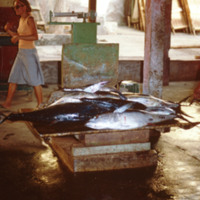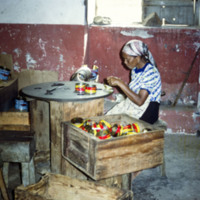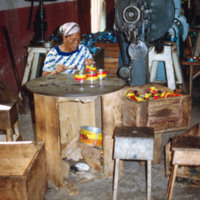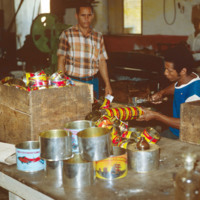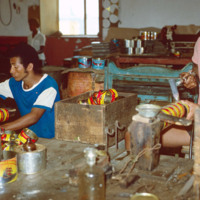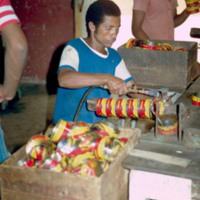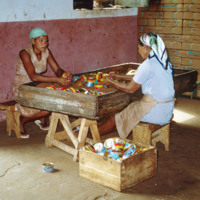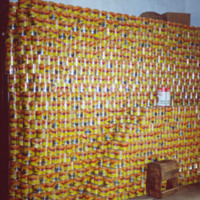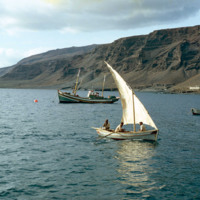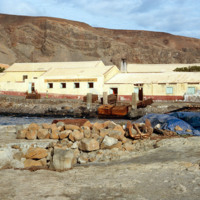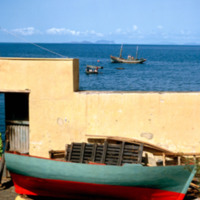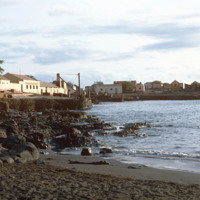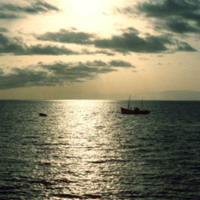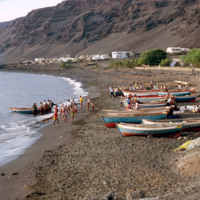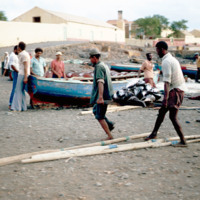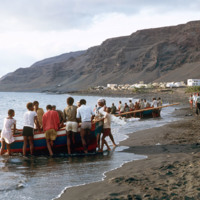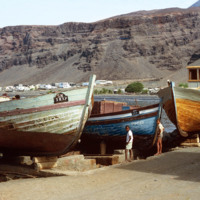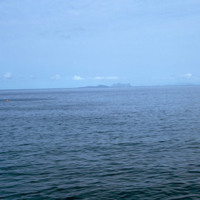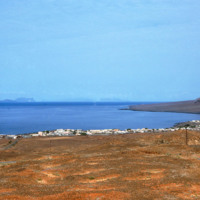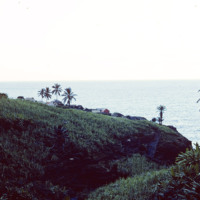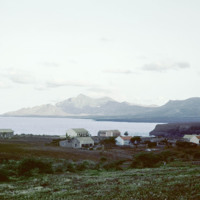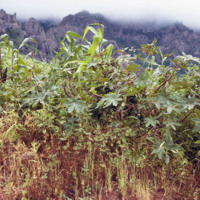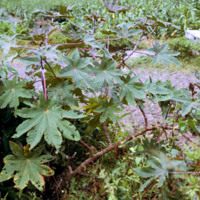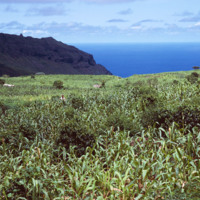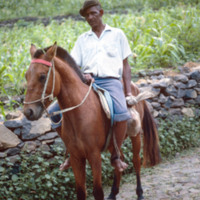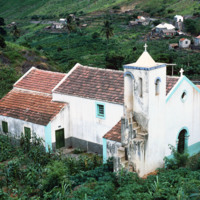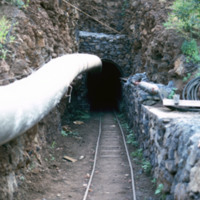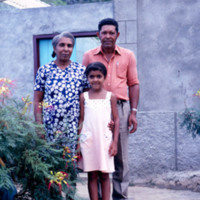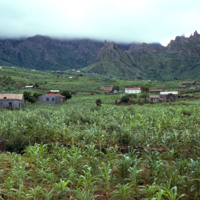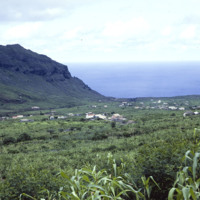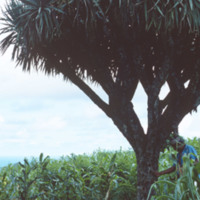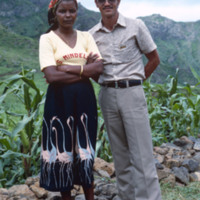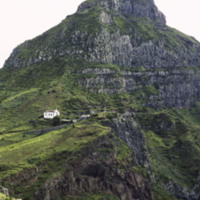Browse Items (85 total)
- Tags: São Nicolau
Food Processing, Tarrafal
Mother and Child; Tarrafal
Family in Tarrafal
Tags: family, portrait, São Nicolau, Tarrafal, Tarrafal Municipality
Tuna Cannery in Tarrafal
Tags: cannery, canning, food, industry, São Nicolau, Tarrafal, Tarrafal Municipality, tuna, workers
Workers at Tuna Cannery
Tags: cannery, fish, fishing, industry, São Nicolau, Tarrafal, Tarrafal Municipality, tuna
Tuna Cannery; Tarrafal
Tags: cannery, fishing, industry, São Nicolau, Tarrafal, Tarrafal Municipality
Workers & Tuna in Cannery
Tags: cannery, fish, fishing, industry, São Nicolau, Tarrafal, Tarrafal Municipality, tuna
Workers in Tuna Cannery
Tags: cannery, fish, fishing, São Nicolau, Tarrafal, Tarrafal Municipality, tuna, workers
Tuna Cannery in Tarrafal
Tags: cannery, fish, fishing, industry, São Nicolau, Tarrafal, Tarrafal Municipality, tuna
Tuna Cannery in Tarrafal
Tags: cannery, fish, fishing, industry, São Nicolau, Tarrafal, Tarrafal Municipality, tuna
Tuna Cannery
Tags: cannery, fish, fishing, industry, São Nicolau, Tarrafal, Tarrafal Municipality, tuna
Tuna on Scale; Tuna Cannery
Tags: cannery, fishing, industry, São Nicolau, scale, Tarrafal, Tarrafal Municipality, tuna
Tuna Fish Catch Being Weighed
Tags: cannery, canning, fishing, industry, São Nicolau, scale, Tarrafal, Tarrafal Municipality, tuna
Worker in Tuna Cannery
Tags: cannery, canning, fishing, industry, São Nicolau, Tarrafal, Tarrafal Municipality, tuna, workers
Worker in Tuna Cannery
Tags: cannery, canning, fishing, industry, São Nicolau, Tarrafal, Tarrafal Municipality, tuna, workers
Shaping and Labeling of Tuna Cans (4 of 4)
Tags: cannery, fishing, industry, São Nicolau, SUCLA, Tarrafal, Tarrafal Municipality, tuna
Shaping and Labeling of Tuna Cans (3 of 4)
Tags: cannery, fishing, industry, São Nicolau, SUCLA, Tarrafal, Tarrafal Municipality, tuna
Shaping and Labeling of Tuna Cans (2 of 4)
Tags: cannery, fishing, industry, São Nicolau, SUCLA, Tarrafal, Tarrafal Municipality, tuna
Shaping and Labeling of Tuna Cans (1 of 4)
Tags: cannery, fishing, industry, São Nicolau, SUCLA, Tarrafal, Tarrafal Municipality, tuna, workers
Tuna Canning
Tags: cannery, fishing, industry, São Nicolau, SUCLA, Tarrafal, Tarrafal Municipality, tuna, workers
Display of Tuna Cans
Tags: cannery, fishing, industry, São Nicolau, SUCLA, Tarrafal, Tarrafal Municipality, tuna
Fishing Vessels on Tarrafal Bay
Tags: bay, fishing, fishing vessel, harbor, industry, sail boat, São Nicolau, Tarrafal, waterfront
Fishing Vessels on Tarrafal Bay
Tags: bay, boat, fishing vessel, harbor, industry, sail boat, São Nicolau, seascape, Tarrafal
SUCLA (Society of Overseas Canning)
Tags: business, fishing, industry, São Nicolau, SUCLA, Tarrafal, Tarrafal Municipality, waterfront
Boat & Tarrafal Bay
Tarrafal Shoreline with a view of SUCLA
Tags: beach, fishing, harbor, industry, São Nicolau, shore, SUCLA, Tarrafal, Tarrafal Municipality, waterfront
Sunset on Tarrafal Bay
Tags: bay, coastline, fishing, fishing vessels, São Nicolau, shore, sunset, Tarrafal, Tarrafal Municipality
Boats Along Tarrafal Bay
Two Men Hauling Tuna onto Shore
Tags: boats, fishing, São Nicolau, Tarrafal, Tarrafal Municipality, tuna, waterfront
Boat Launching into Tarrafal Bay
Boats along the waterfront of Tarrafal Bay
Tags: boats, coastline, fishing, harbor, São Nicolau, Tarrafal, Tarrafal Municipality, waterfront
Ilhéu Raso and Ilhéu Branco
Shoreline of Tarrafal
Tags: beach, boats, fishing, harbor, São Nicolau, Tarrafal, Tarrafal Municipality, waterfront
Tarrafal, Aerial
Tags: aerial, city, coastline, harbor, landscape, rocky terrain, São Nicolau, Tarrafal, Tarrafal Municipality
Tarrafal
Tarrafal Bay and Dwellings
Tags: agriculture, bay, coastline, fishing, harbor, landscape, São Nicolau, Tarrafal, Tarrafal Municipality, village
São Nicolau Highlands
Castor Oil Plant (2 of 2)
Castor Oil Plant (1 of 2)
Corn Crop Field
Tags: Ribera Brava / Panja, São Nicolau
Unidentified Man Riding a Horse
Tags: cobblestone, hinterland, horseback, portrait, Ribera Brava, roads, São Nicolau
Parish Church in Ribera Brava
Construction of the Fajã Gallery
Portrait of Family Outside of a Home
Tags: family, portrait, Ribera Brava / Panja, São Nicolau
São Nicolau Highlands
São Nicolau Highlands
Dragoeiro, the Dragon-tree
Portrait of a Middle Aged Man and Woman
Tags: landscape, portrait, Ribera Brava / Panja, São Nicolau
